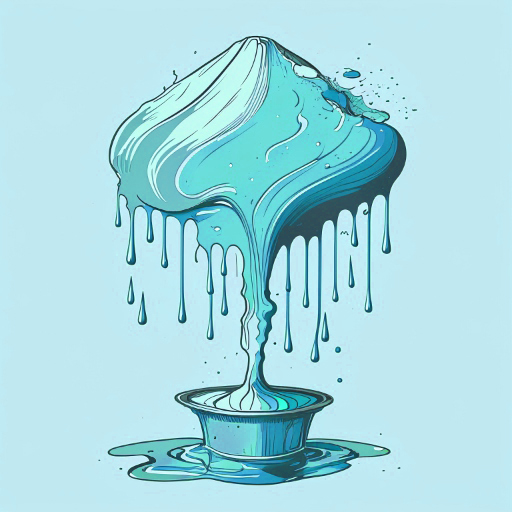Turquoise is a unique and attractive color that brings to mind images of exotic beaches and unique gemstone jewels. The unique combination of blue and green makes turquoise a color that stands out and catches the eye.
Aside from the semi-precious stone turquoise, this is a color that doesn’t occur often in nature, but when it does, its beauty is breathtaking.
In this article, we will take a look at its symbolism, its history and what it is commonly used for today.
What meaning and characteristics are attributed to the color turquoise?
Turquoise is a blue/green color, named after the gemstone. The word “turquoise” is derived from the French word meaning “Turkish,” as the stone was originally brought to Europe from Turkey. It was first used in English as a color name in the year 1573.
Turquoise is a soothing and refreshing color that is associated with sophistication, energy, wisdom, serenity, friendship, love and joy. Its different shades have a soft and feminine touch, which is why it is often considered a “girl’s color”. Some variations of the color are used to represent water and are called aquamarine and aqua.
Don't miss our ultimate guide on graphic design!
Discover the best online courses, master's degrees, and university programs for a successful career in design with our "Ultimate Guide to Studying Graphic Design: The Best Options for a Successful Career". Shape your future in the creative industry today.View Post Read Later
Turquoise is a symbol of good luck. Both the color and the turquoise stone symbolize friendship and are believed to bring peace to the home and everyone in it. For this reason, the stone is often used for good luck charms.
It symbolizes protection. Turquoise symbolizes protection against negative energy and harm. This stone has been used for decades as a protection amulet. It is also believed to protect you and your possessions from loss, attacks, theft or accidents. For this reason, many people often carry it with them when they travel.
It has healing properties. Turquoise is said to have healing properties that affect the body and mind. Many believe it helps neutralize acidity, relieves stomach problems, rheumatism and viral infections, while also acting as an anti-inflammatory, which helps improve communication skills and calm the mind.
Turquoise represents water. Because of its calm energy, turquoise is said to have a clear and strong connection to the purity of natural elements such as water or air.
As we mentioned earlier, turquoise also has many health benefits. It is believed to increase muscle strength and even relieve gout.
However, too much turquoise in your life can make your mind overactive, creating an emotional imbalance. It can make you feel overly emotional or not emotional at all. Being surrounded by turquoise can cause you to become overly analytical, self-centered and extremely picky.
An insufficient amount of this color can also have negative effects, such as influencing you to withhold your feelings, which can lead to confusion and secrecy about the direction your life is taking. It can also cause you to become cold, indifferent and even a bit paranoid at times.
What emotions and sensations does turquoise evoke?

Whether you lead with your head or your heart, turquoise addresses both. By bringing these two forces together, turquoise gives rise to healthy emotions. Color psychology suggests that turquoise heals and controls our feelings. As a result, we gain emotional stability. However, overuse of turquoise can precipitate emotional imbalance.
As tranquil as it is alluring, turquoise restores, warms and soothes the soul. We can attribute its peaceful presence to its blue hues, its energizing spirit to its yellow elements and its uplifting aspects to its green components. Together, these three hues make turquoise the uplifting and relaxing color that it is. To combat stress and fatigue, turn to turquoise
Turquoise helps us think clearly, making it the ideal color to have around when an emergency arises. Not only does it encourage sound decision making, but it also promotes structure. When we see turquoise, it makes us want to be more organized. It doesn’t demand that we put things in order. On the contrary, it simply suggests it.
Mastering emotions is easier said than done. Turquoise facilitates this process by calming the nervous system. When our nerves calm down, it bodes well for stress-free living. It also increases self-confidence, which makes us more confident in our daily decisions
For speakers, seeing turquoise can offer a wave of tranquility. When giving a speech, turquoise reminds us to get out of our head. This allows us to stay focused and level-headed.
Personality traits associated with the color turquoise
If your favorite color is turquoise, you may have a “turquoise personality,” which means there are some character traits that are specific to those who love this color. Here’s a list of the most common personality traits found in people who love turquoise, and while you’re not likely to exhibit all of the traits listed below, you’re sure to find some that are totally you.
- People who love turquoise are approachable and very friendly. They are also very easy to communicate with.
- Turquoise personalities are self-reliant, with very good self-esteem.
- They are great decision makers and clear thinkers.
- They are great leaders and tend to influence others.
- For turquoise personalities, public speaking and the ability to focus and concentrate are generally easy.
- They have great powers of perception and are excellent at finding solutions to problems.
- On the negative side, they can be a bit self-centered and attuned to their own needs to the exclusion of others.
- Their deepest need is to have emotional balance in life and the ability to express all hopes and dreams. They are people who like to make their own way in the world and live on their own terms.
History of the color turquoise
Below we will briefly discover the use of turquoise throughout history and different civilizations:
Egypt
Turquoise became popular in Egypt when the Egyptians discovered the turquoise gemstone over 7,500 years ago. They coveted the gemstone, considering it sacred and believing it contained metaphysical powers. The color of turquoise was used for jewelry and also in the inner coffin of King Tutankhamun.
The Egyptians made turquoise pigments by heating sand, limestone and copper together, resulting in a rich, saturated pigment of royal turquoise, called “Egyptian blue.” This pigment was very popular and was soon adopted by Persians, Greeks and Romans, who even built large factories for its production.
Ancient China
The ancient Chinese manufactured their own turquoise pigments by mixing heavy elements such as lead, mercury and barium with copper. However, the same heavy elements were often prepared in elixirs that turned out to be toxic and it was reported that about 40% of Chinese emperors were poisoned by heavy elements. After that, pigment production was discontinued.
Turkey
Turquoise stone has been recognized as a talisman of protection and good luck for centuries and was first used as a talisman by Turkish soldiers centuries ago.
Mesoamerica
Another turquoise pigment was invented by the Mesoamericans, who mixed indigo plant extract, sacred Mayan incense resin and clay minerals. Different shades of the color were made, ranging from turquoise to dark blues, but it is not very clear how the Mesoamericans made various shades. The pigments were perfect and, unlike the Egyptians, caused no ill effects.
Turquoise in Fashion and Design
Turquoise has taken the fashion world by storm and has become one of the most popular colors for both fashion and jewelry. The color looks great in any type of attire, from evening gowns to party dresses with all kinds of embellishments and fabrics.
Turquoise is also very easy to combine with other colors. It goes especially well with earthy and warm colors such as brown, orange and yellow, but it also tends to look great with cool colors such as purple, pink, green and blue.
Turquoise accessories can make even the simplest ensembles colorful and attractive. Today, many designers combine turquoise with diamonds, pearls and even gold.
The matrixed turquoise gemstone is a popular choice for bohemian and rustic jewelry, although blue versions of turquoise are often used to make high-end fine jewelry.
Meaning of turquoise in different cultures

The color turquoise has much symbolism in various cultures, but common to all of them is the belief that it has protective powers.
In Egypt, the color turquoise, like the stone, was sacred and revered. It was believed to provide powerful protection and was associated with Hathor, known as the goddess of dance, music and motherhood. Turquoise was common in funerary objects and tombs, as it was said to protect the deceased on their journey to the afterlife.
Ancient Persians wore turquoise stones around the neck or wrist to protect against unnatural deaths. If the stones changed color, it was believed that doom was approaching. However, the color only changed because of dust, acidity of the skin or certain chemical reactions, but this was not understood at the time. Even today, for Persians, turquoise represents protection against death. It is also associated with Iranian architecture.
Turkish warriors made talismans from this ancient mineral. They used them to adorn their swords, their armor and the bridles and saddles of their horses. They believed that these amulets specifically protected them from injuries associated with falls.
In addition, they believed that turquoise increased their courage, providing the inner calm necessary to master fear. In addition, they believed that the water stone provided good fortune and happiness
In Russia and Central Asia, turquoise is closely associated with the interiors of large mosques and domes, similar to Iran.
Turquoise is a very significant color in Native American culture, as it represents life and the hues of the Earth. The stone is highly revered for its unique color-changing properties.
In Indian culture, turquoise represents protection and strength, while it is believed to confer psychic sensitivity to the wearer. It also symbolizes hope, wealth and courage. Indians consider this color to be auspicious, signifying happiness, prosperity and calm.
Early Native American tribes attached great importance to this beautiful blue stone. They associated it with the sky god, and shamans relied on the stone as a conduit between heaven and earth. Specifically, they used it to channel the healing energies of the cosmos.
Many Native Americans wore this powerful blue-green stone for protection in battle. For example, the Apache made turquoise amulets and charms. They used these amulets to decorate their arrows, believing that the powerful stones improved marksmanship and accuracy. (source)
Variants and shades of turquoise

Aquamarine is closer to green than blue. It is refreshing, uplifting, creative and cheerful, yet strong and independent.
Aquamarine enhances creativity and inspiration. It calms and balances the mind and emotions.
Blue-green (or teal) is an advanced turquoise shade that symbolizes credibility and reliability. It is known to promote commitment and spiritual development.


